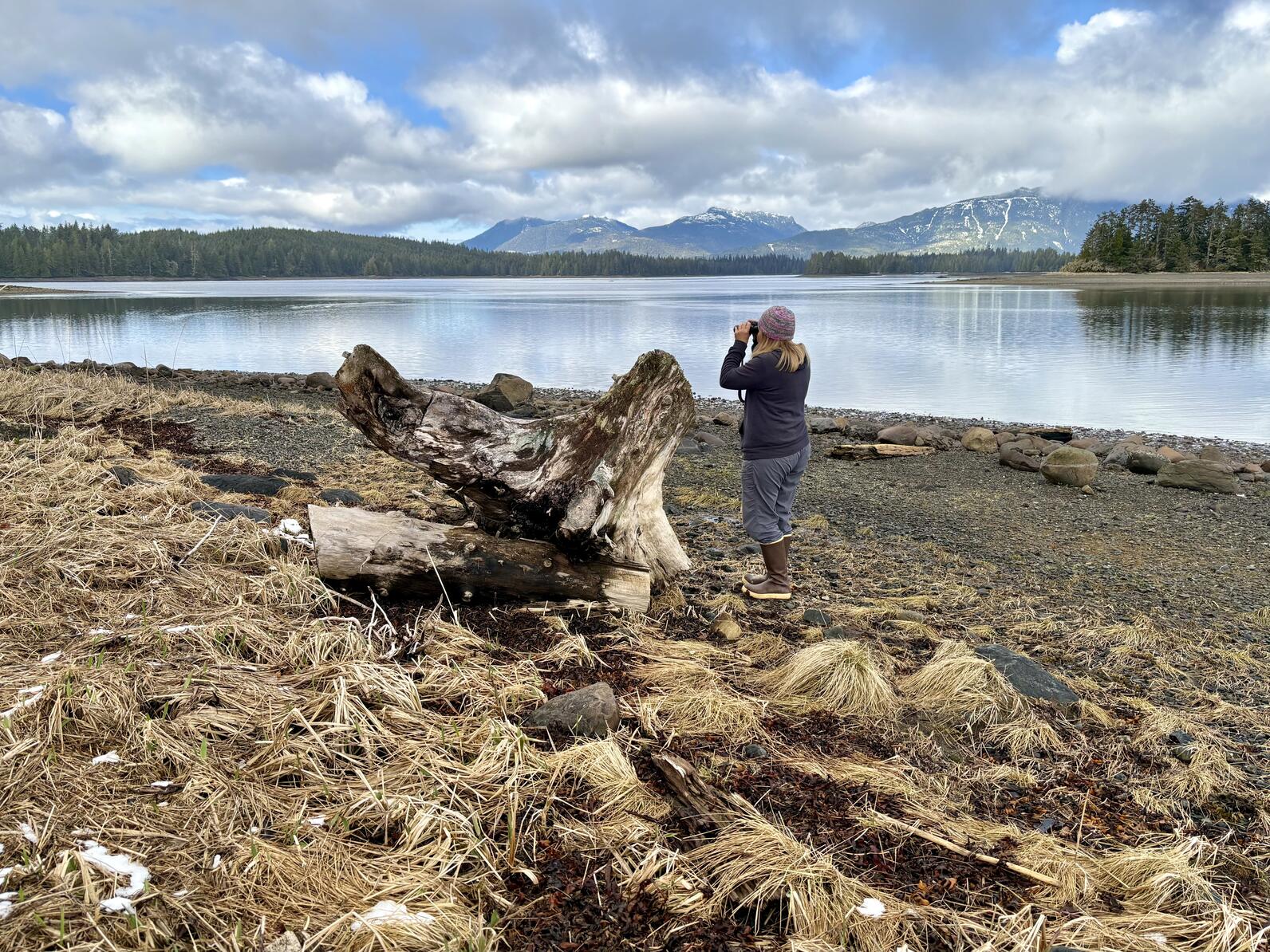I came to Prince of Wales Island (for only the second time) in early spring for Whale and Bird Fest 2024—a beloved event that is back on the annual calendar after a five-year hiatus. As the Communications Manager for Audubon Alaska, my first goal was to talk about the Southeast Alaska Birding Trail. My second was to experience it.
The Southeast Alaska Birding Trail is a virtual and mobile app experience that runs from Yakutat to Ketchikan. The trail covers nearly 200 birding sites across 18 communities throughout Southeast. That includes 21 birding sites on Prince of Wales Island in five communities—Coffman Cove, Craig, Hollis, Klawock, and Thorne Bay.
We first stopped in Ketchikan, swapping plane for boat, and dragged our luggage through the rain along Creek Street against Ketchikan Creek. Then we cut back through the Ketchikan Town Center to hop on the Inter-Island Ferry and into a choppy few hours in the beautiful Clarence Strait.
Our next chariot was the Subaru of Cheryl Fecko, one of the event coordinators. I was first bound for the birding sites in Hollis—Maybeso Creek Delta and Harris River. Coming from Anchorage I was delighted to see the Bald Eagles of the Tongass National Forest again, but more impressed by the overgrown barge at Maybeso.

The next day, after a talk I gave to Craig High School students about the trail, we set off again—this time to Klawock. We stopped by the hatchery and saw Dark-eyed Junco flitting in the trees. We cruised along the Klawock Inlet and stopped at Veterans Memorial Totem Park and spotted Canada Goose and a few duck species. My host spotted some folks she knew processing herring eggs, so we pulled over for a sample.
American Robins dotted the lawn back at the high school where Melanie Smith (Director of Digital Science & Data Products), Stephanie Juries (Emerald Island Adventures), and I talked to a group of about 50–including some visitors—about bird tourism in Southeast, Audubon’s Bird Migration Explorer tool, and local POW species (complete with cute photos).
The next morning, after crafting some glass American Oystercatchers with Kathy Peavey’s Southeast Alaska Art Glass, we launched with Stephanie out of Craig Harbor. Five people with as many binoculars set off into the marine waters near Craig.
Things were quiet at first, then the Bald Eagles started showing up in San Alberto Bay, followed by sea lions. Then, a massive raft of White-winged Scoters (mixed with some Black and Surf Scoters). Our estimates ranged from hundreds to 2,000. Next was an island of Gulls—Glaucous, Iceland, and more.

Finally, the motherload. Focusing on the rocky shoreline of another small land mass, we started spotting tons of Black Turnstones and Surfbirds. The Turnstones took flight, showing off their seemingly practiced murmurations. We hung here for some time, even dropping the anchor, until we were distracted by the one thing that could steal away our attention for shorebird gazing—whale spots. We raced off, catching mist and the dorsal fin till finally, a breath! It was now truly Whale and Bird Fest for our small party.
Other species were spotted that afternoon—Rhinoceros Auklet, Harlequin Duck, and Northern Pintail. But on the way back to the harbor, a group of a baker's dozen Long-tail Ducks floated in our path, popping up in a tight group. But then as if in an effort of goodbye, the group circled back and flew, flashing their bellies, close across our line of sight like feathered synchronized swimmers.
All five bird nerds in the cabin cheered.












